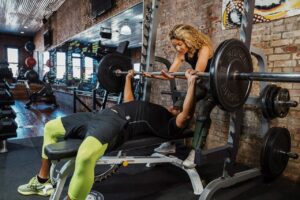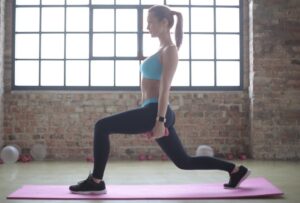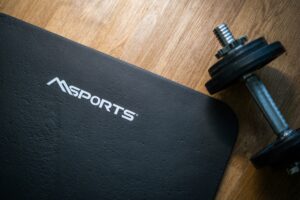Hack squats are a popular lower body exercise typically performed on a hack squat machine.
The exercise is helpful because it allows you to target the quadriceps with more weight without putting stress on the lower back.
But what if you don’t have access to a hack squat machine or can’t do the exercise for some other reason? Is there a good hack squat alternative?
Luckily, there are plenty of substitutes to consider. Let’s see what they are.
An In-Depth Look at Hack Squats
As mentioned above, hack squats are typically performed on a special machine.
Here is how to do the machine hack squat:
- Add the appropriate load.
- Set yourself up inside the machine with your shoulders and upper back against the top pad.
- Position your back against the padded rear platform.
- Plant your feet flat on the platform with your toes pointing slightly out. Use a stance similar to the one you use for other squat variations.
- Grab the handles to the sides of your head, bring your shoulders back, take a deep breath, and squeeze your abs.
- Unrack the weight as you would for a Smith machine squat or leg press and descend by bending your knees.
- Move down until your knees are at a 90-degree angle, and hold for a moment.
- Press through your heels and flex your quadriceps to straighten your legs and get back to the top position. Exhale.
- Inhale and repeat.
A notable benefit of the hack squat is that it allows you to train your entire lower body with enough weight without worrying about balance or stability (1). All you have to do is focus on bending and extending your knees.
Unlike many other lower body exercises, hack squats are excellent because you maintain an upright torso, which keeps the stress away from your lower back. In contrast, movements like the barbell back squat lead to a much greater torso angle.
Hack Squats Muscles Trained
The primary muscles trained during a hack squat are the quadriceps, which make up the front portion of the thighs and produce knee extension (straightening of the legs) (2).
Other muscles involved in hack squats include the calves, hamstrings, glutes, and, to a degree, the adductors (inner thigh muscles).
One way to tweak the exercise is by adjusting your stance. Doing so influences muscle activation. For instance, a narrower stance benefits the quadriceps, whereas a wider one allows the adductors to contribute more.
Similarly, squat depth plays a role. A deeper squat leads to better gluteus maximus activation, whereas not descending as much keeps more of the tension on the quadriceps.
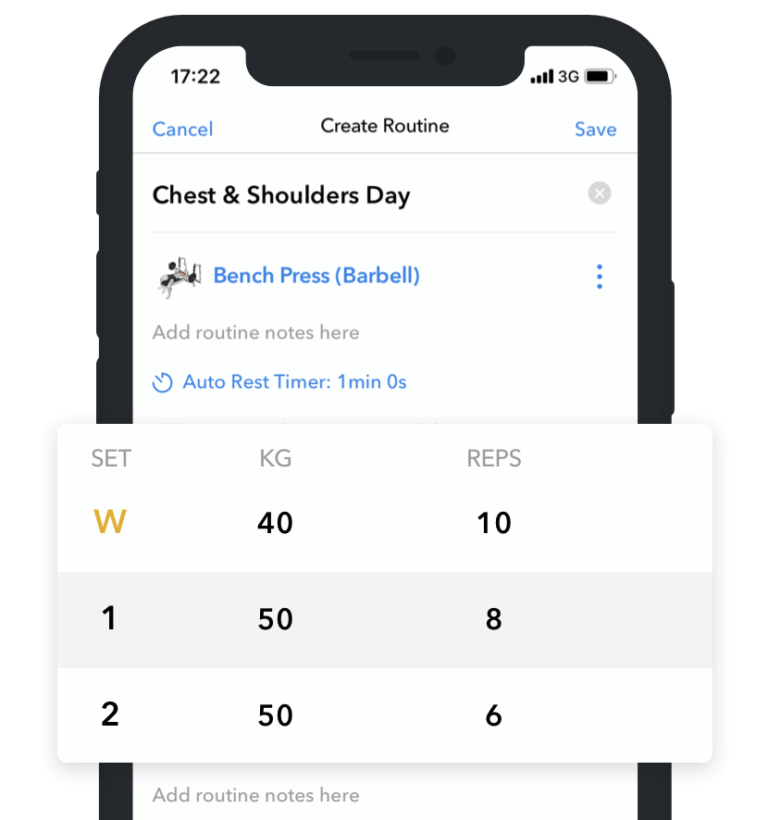
Hevy – Workout Tracker





Hevy – Workout Tracker
Log your hack squat alternative exercises with Hevy, and track your progress
Tips for Effective Machine Hack Squats
A helpful tip to keep in mind for effective hack squats is to train through a full range of motion and always use a weight you can control.
Too many trainees load up the hack squat machine because they don’t have to worry about stability. Doing so often forces lifters to shorten their range of motion because they lack the quadricep strength to do complete reps.
Another tip for the hack squat is to experiment with various foot placements and squat depths to see what feels most natural and promotes optimal quadriceps activation.
For most people, a regular stance (feet roughly shoulder-width apart with toes pointing slightly out) is ideal, but don’t be afraid to do some tests with lighter weights.
Let’s now explore what to look for in a hack squat replacement. First, we will share some tips for picking a hack squat substitute and then review some similar exercises you can try.
Tips for Finding a Good Hack Squat Alternative
1. It Should Be Safe
Classic hack squats are a challenging but safe exercise. Most hack squat machines come equipped with safety latches at regular intervals on the parallel rails, which allow you to rack the weight at almost any point should you fail to complete a repetition.
The substitute for hack squats should ideally come with built-in safety features that allow you to bail if something goes wrong.
For example, the front squat is much more challenging than hack squats, but you can simply drop the barbell forward if you fail to complete a repetition.
2. It Should Be Easy to Learn
Hack squats are a compound exercise because they train several major muscle groups and involve three joints (the ankles, knees, and hips). Still, they are relatively easy to learn, as most people develop the necessary skill within a few sessions.
A hack squat alternative exercise should ideally be straightforward to start doing. Of course, that doesn’t mean more complex activities can’t be great alternatives to hack squats.
More challenging exercises offer unique benefits and often bring weak points into focus, helping you improve and become a better athlete.
For example, front squats require a front rack barbell position that forces a much more upright posture. In addition, such a position requires excellent upper-body mobility and back strength.
3. It Shouldn’t Put Stress on Your Spine
Some back stress is inevitable with strength training, but that isn’t an issue when lifters use the appropriate load and maintain proper technique.
Machine hack squats train your lower body and put almost no stress on the spine because your back is positioned against a padded platform. Hack squat alternatives ideally keep your back in a safe and stable position.
Now that we know what to look for let’s go over nine alternatives to hack squats. No exercise is 100 percent identical to the hack squat, but the following are practical activities that share some similarities and work as great substitutes.
9 Hack Squat Variations
1. Barbell Hack Squat
Muscles worked: quadriceps, hamstrings, glutes, upper and lower back, midsection, shoulders, biceps, and forearms
Equipment: a barbell and weight plates
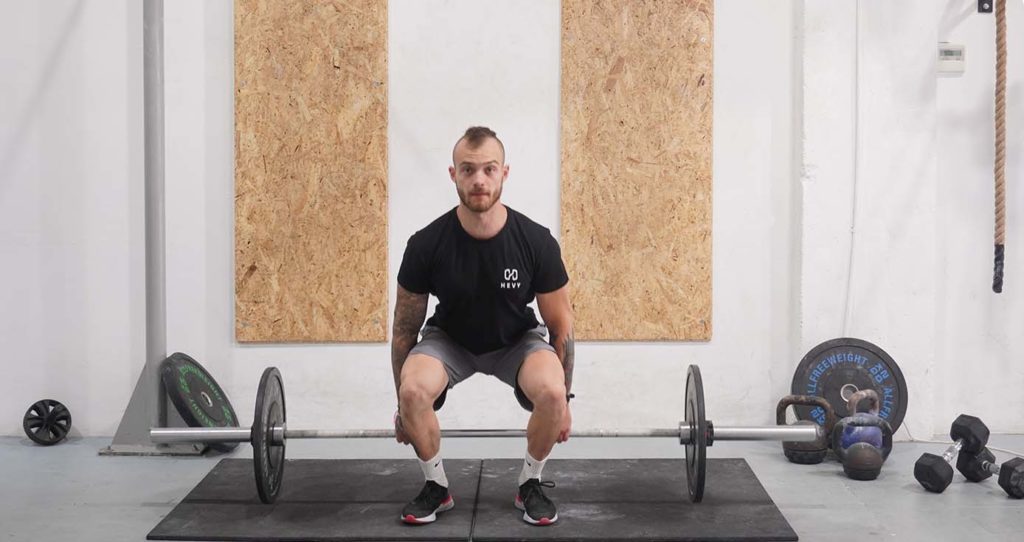

How to:
- Stand tall with a loaded barbell behind your body. The bar should be just behind your calves.
- Position your feet shoulder-width apart, with the toes pointing slightly forward.
- Hinge at the hips to bring your buttocks back and lean your torso forward while keeping your back straight.
- Grab the barbell with an overhand grip (palms facing back). Your hands should be just outside your lower legs.
- Bring your shoulders back to pull the bar against your calves, engage your abs, and inhale.
- Press your heels into the floor as you pull the bar straight up, dragging it against the rear of your thighs.
- Stand tall, fully extending your knees, and squeeze your glutes to complete the repetition.
- Slowly lower the barbell in the same straight line, keeping it close to your body.
- Exhale near the bottom and repeat.
Pro tip:
Trainees make the mistake of leaning forward too much and lifting their heels off the floor, which leads to instability.
Avoid the error by sitting back into the movement and placing more weight on your heels. You should almost feel like you can lift your toes off the floor during barbell hack squats.
2. Front Squat
Muscles worked: quadriceps, hamstrings, glutes, back, midsection, shoulders, and arms
Equipment: a barbell, weight plates, and squat stand or rack
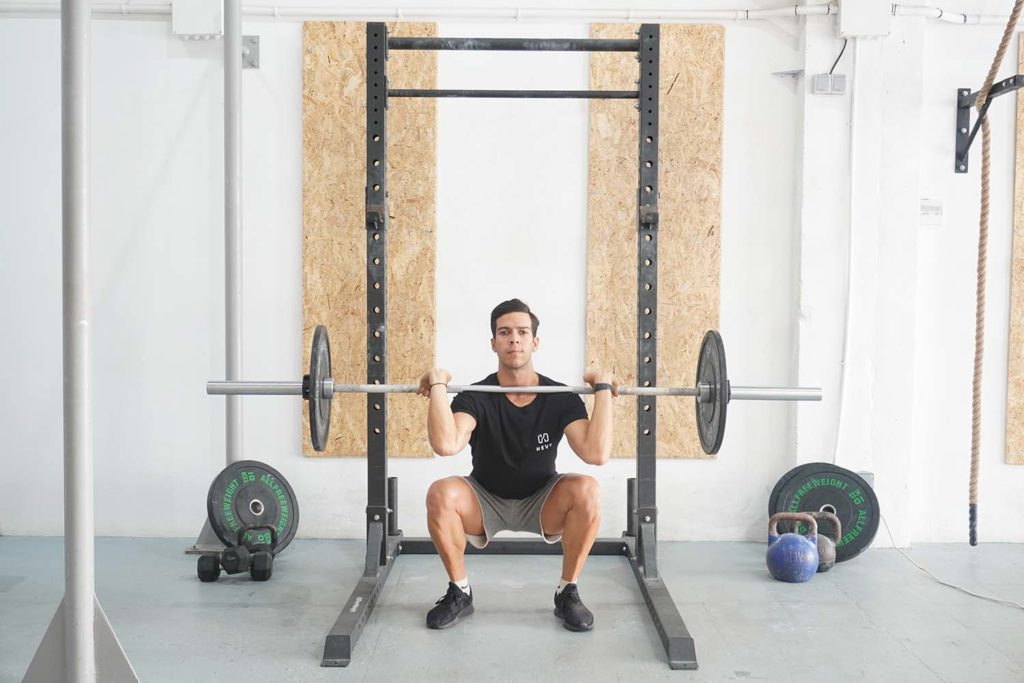

How to:
- Set the barbell at collarbone height and stand in front of it.
- Place your fingertips on the bar with your hands roughly shoulder-width apart.
- Step forward and bend your arms to rotate your wrists. Your palms should face the ceiling, and your fingertips should be in contact with the bar.
- Bring your shoulders back as you lift your elbows to shoulder level to finalize the front rack position.
- Engage your abs, inhale, and straighten your knees to unrack the barbell.
- Take two careful steps back to clear enough room, and keep your elbows high to prevent the bar from falling forward.
- Take a deep breath and descend into a squat, keeping your heels on the ground.
- Descend until your thighs are roughly parallel to the floor, and press through your heels to move back to the top position. Exhale.
Pro tip:
You may lack the upper back and shoulder mobility for the traditional front rack position.
In such a case, you can use a crossed-arm grip. Extend your arms forward, position your deltoids underneath the bar and have it rest on top of your collarbone. From there, bend your elbows and place your hands over your shoulders to support the bar and keep it in position.
Drive your elbows up to keep your upper back straight and prevent the bar from rolling forward.
Further reading: Identifying Leaks in the Front Rack Position
3. Goblet Squat
Muscles worked: quadriceps, hamstrings, glutes, back, midsection, shoulders, and arms
Equipment: a dumbbell or kettlebell
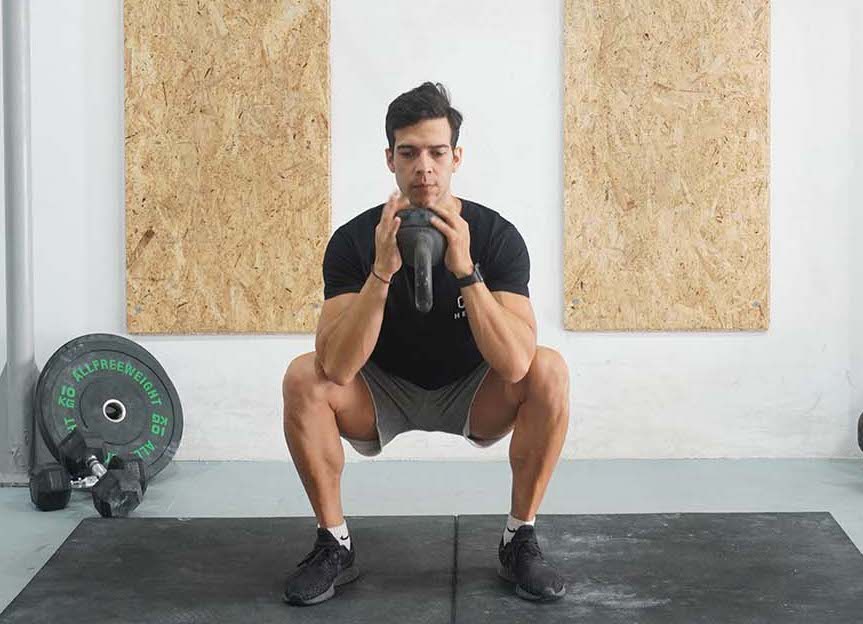

How to:
- Grab a dumbbell, position it vertically, lift it in front of your chest and place your palms flat against the top weight plate. Alternatively, hold a kettlebell by the sides of the handle in the same position.
- Have your legs in a comfortable stance with your toes pointing slightly out.
- Bring your shoulders back.
- Take a deep breath into your belly and tense your midsection.
- Descend into a squat by bending your knees and keeping your heels in contact with the ground.
- Move down until your thighs are parallel to the floor, and press through your heels to move back to the top position. Exhale.
Pro tip:
Keep the weight (dumbbell or kettlebell) close to your chest during goblet squats. Having it too far in front of you makes it more challenging to maintain balance and puts more stress on your biceps, making them a limiting factor.
4. Leg Press
Muscles worked: quadriceps, hamstrings, glutes, and midsection
Equipment: a leg press machine and weight plates (depending on the machine type)
How to:
- Add the appropriate load by using weight plates or selecting from a stack, depending on the type.
- Set yourself up on the machine with your back flat against the padded platform and feet flat on the footplate.
- Position your feet roughly shoulder-width apart with your toes pointing slightly out.
- Bring your shoulders back, take a deep breath, and engage your abs.
- Unrack the weight with the handles to your sides.
- Slowly lower the platform to yourself by bending your knees.
- Go down until your knees are at a 90-degree angle, and pause for a moment.
- Press through your heels to extend your legs and exhale.
- Once finished, extend your legs, and rotate the handles in the opposite direction to rack the weight before relaxing.
Pro tip:
Don’t bend your knees to the point where your glutes lift off the platform. Doing so might seem beneficial for muscle activation, but it puts unnecessary stress on your lower back by promoting spinal rounding.
Lower the weight until your knees are at a 90-degree angle instead.
5. Sissy Squat
Muscles worked: quadriceps, hamstrings, glutes, calves, back, and midsection
Equipment: weight plate
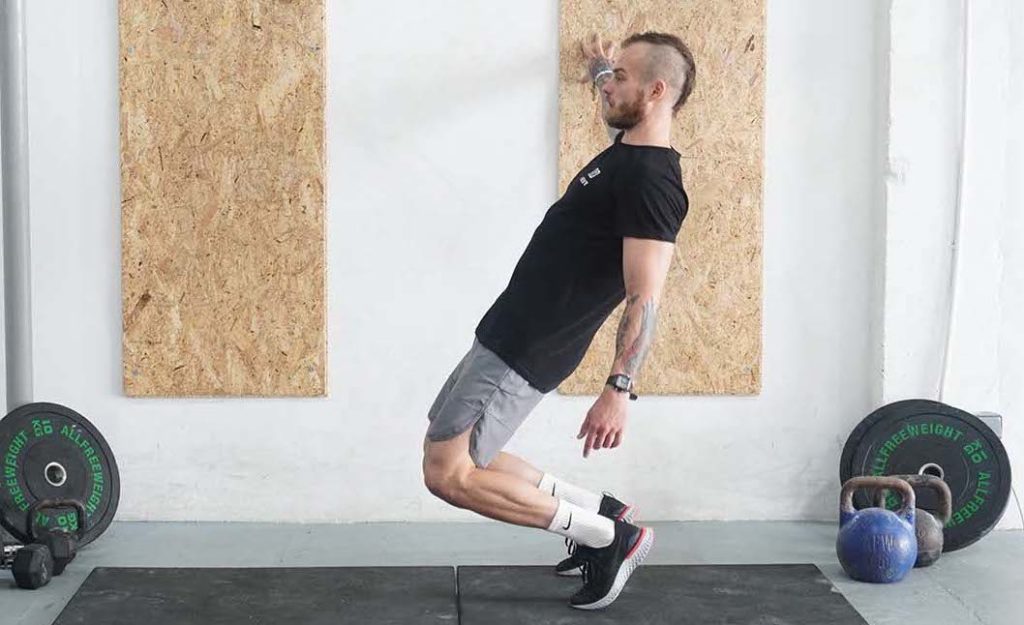

How to:
- Stand next to a squat rack or another study object you can hold for support and balance.
- Place a couple of weight plates on the floor and position your heels over them with your feet roughly shoulder-width apart.
- Stand tall with your shoulders back.
- Optional: Grab a sturdy object for balance with one hand and keep your other arm at your side.
- Take a deep breath into your belly and tense your midsection.
- Descend into a squat by bending your knees, leaning your upper body back, and lifting your heels off the floor.
- Go down as much as you comfortably can, hold for a moment, and flex your quadriceps to straighten your knees, bringing yourself to the starting position.
- Exhale near the top.
Pro tip:
Tense your midsection before every set and maintain your position until you’re done. One common error with the exercise is flexing the hips (bending at the waist), which takes the focus away from the quadriceps and puts it on the hip flexors.
Related article: Sissy Squat – Progression into the Full Movement and Mistakes to Avoid
6. Smith Machine Squat
Muscles worked: quadriceps, hamstrings, glutes, midsection, back, shoulders, and arms
Equipment: Smith machine and weight plates
How to:
- Set the Smith machine bar slightly lower than collarbone height and add the appropriate load.
- Raise your arms and place your hands on the bar, roughly shoulder-width apart.
- Grab the bar without rotating it and tuck your head under, positioning your upper back muscles against it.
- Walk your feet out several inches and plant them flat on the floor. The correct Smith machine bar height would allow for your knees to be slightly bent at this point.
- Bring your shoulders back, take a deep breath, and tense your midsection.
- Straighten your legs to unrack the bar, and turn your hands forward (or backward) to remove the safety latches.
- Inhale once again and descend into a squat by bending your knees.
- Move down until your thighs are parallel to the floor.
- Hold the bottom for a moment and press through your heels to straighten your legs. Exhale near the top.
Pro tip:
One common tendency, especially among inexperienced trainees, is pressing from the balls of the feet. Doing so puts unnecessary stress on the feet and increases the risk that your heels will lift off the floor.
Instead, plant your heels on the floor and press through them from the bottom of each repetition. It should almost feel like you can lift your toes off the floor and maintain your position.
7. Wall Squat
Muscles worked: quadriceps, hamstrings, glutes, and midsection
Equipment: none
How to:
- Position your upper back against a wall and walk your feet out until your heels are roughly one foot forward. The ideal distance will vary depending on the person’s height and limb length.
- Bring your shoulders back, position your arms to your sides, and flex your midsection.
- Take a breath and descend into a squat, sliding your back against the wall.
- Move down until your thighs are parallel to the floor, and hold for a moment. Your knees should be directly over your heels.
- Press through your heels to bring yourself to the top as you exhale.
- Inhale again and repeat.
Pro tip:
Aim for fewer, slower, and more controlled reps to train your quadriceps effectively. High-rep sets can be beneficial, but having your back against the wall can create friction and discomfort.
A good tempo to try is 5-5-5-1. Lower yourself for 5 seconds, hold the bottom for 5 seconds, move up for another 5 seconds, and pause for a second.
8. Belt Squat
Muscles worked: hamstrings, quadriceps, glutes, and midsection
Equipment: a belt squat machine and weight plates
How to:
- Add the appropriate weight to the machine.
- Put the belt around your waist, just over your buttocks, and attach it to the bar on the machine.
- Assume a comfortable stance for squatting, bring your shoulders back, take a deep breath, and tense your abs.
- Push through your heels to straighten your knees and lift the weight off the floor.
- Pull the lever to the side to unrack the weight and inhale again.
- Descend into a squat and keep your heels planted on the ground.
- Move down until your thighs are parallel to the floor.
- Press through your heels to extend your legs and bring yourself to the top. Exhale.
- Once finished, stand tall, pull the safety lever to rack the weight, and relax.
Pro tip:
The belt squat is an effective hack squat machine alternative, but it takes some attention to detail to master.
One helpful tip to remember during the setup is to have your body directly over the point where you anchor your belt. If the machine’s belt comes with a chain, it should run straight down and attach to the bar.
Such a position keeps the weight in line with your center of gravity, and no forces pull you forward or back to create instability.
9. Landmine Squat
Muscles worked: quadriceps, hamstrings, glutes, upper and lower back, midsection, shoulders, upper chest, and arms
Equipment: a landmine attachment, standard barbell, and weight plates
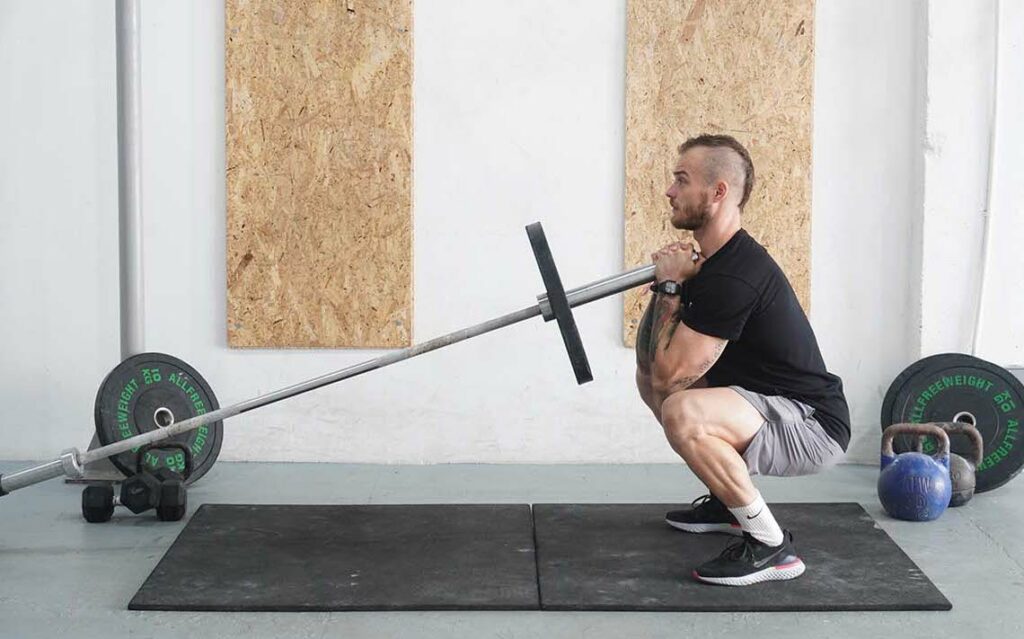

How to:
- Anchor one end of a standard barbell to a landmine attachment.
- Grab the opposite barbell sleeve and lift it to chest height, supporting it with both hands, similar to how you would during a goblet squat.
- Position your feet comfortably (roughly shoulder-width apart with toes pointing slightly out).
- Retract your shoulder blades, take a deep breath, and tense your abs.
- Descend into a squat by bending your knees.
- Move down until your thighs are parallel to the floor, and hold for a moment.
- Press through your heels to bring yourself to the top position and exhale.
Pro tip:
Place your palms flat against the barbell sleeve and consider interlocking your fingers to create a solid grip and ‘shelve’ for the weight.
Related article: Best Leg Workout and Exercises for a Strong Lower Body





Hevy – Workout Tracker





Hevy – Workout Tracker
Log your hack squat alternative exercises with Hevy, and track your progress
If you’re looking for further assistance in finding good exercises, putting together workouts, and tracking your progress, check out the Hevy app.
Final Thoughts
Machine hack squats offer numerous unique benefits. For example, the exercise is good for people with spinal issues, the overloading potential is excellent, and trainees don’t have to worry about stability.
Unfortunately, not everyone has access to a hack squat machine, and some people can’t do the movement for one reason or another.
Luckily, there are numerous substitutes for the exercise to train your quads and keep spinal loading to a minimum. The belt squat is an excellent alternative to hack squats, but you can also consider leg presses, goblet squats, and even the Smith machine squat.


